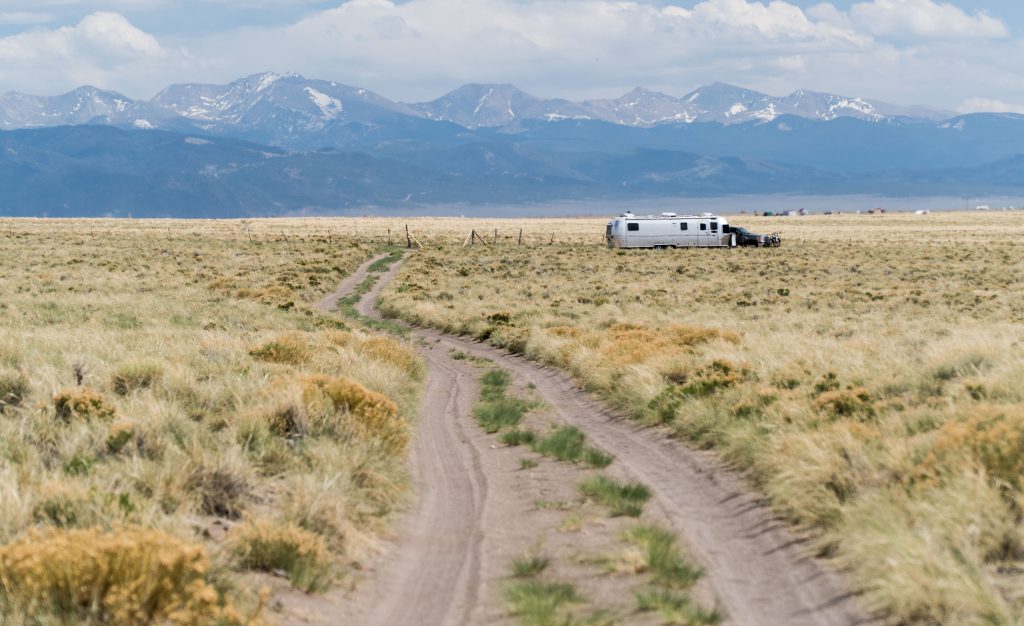Internet in our Airstream: How we stay connected as digital nomads
Maintaining connectivity is easier said than done. Getting internet in an Airstream isn't simple, but with these tips, it's manageable.

In 2016, my wife and I sold both of our homes and bought a 30-foot Airstream. Today, we're full-time travelers without any stationary place and, for the most part, couldn't be happier. But, getting the Internet in our Airstream is easier said than done.
In fact, one of the questions that we get asked a lot is how we maintain our access to the Internet inside our trailer.
As you know, we are highly-connected people. I maintain two different blogs, my wife and I run a growing YouTube channel, and we also created an online course about planning road trips in an RV.
We do everything online. My wife answers practically every comment on YouTube. We've put together a couple of Facebook communities.
In other words, the Internet is a part of our lives.
Most people really, really want to know (other than what we do about healthcare) how we stay connected without a dedicated broadband connection to the Internet.
This is how.

How we get the Internet in our Airstream
As technologically-advanced as our society is, there are still a lot of dead zones around the country. It's a prayer, for example, to find a signal within most national parks. Small towns also suffer from either slow or non-existent connectivity.
Sometimes, it's not easy to stay connected as digital nomads. But, here is how we manage to keep that Internet connection streamin'.
Unlimited Verizon (through a Jetpack)
Several years ago, we assumed the responsibility of a grandfathered unlimited plan through Verizon wireless that was previously established by someone else. This plan was bought years ago (by the original subscriber) when Verizon actually offered a truly unlimited plan.
No restrictions. No throttling. Just straight access to the Internet through Verizon's network.
This is our primary Internet connection.
We use a Verizon Jetpack, which takes Verizon's signal and turns it into a wireless network that our devices (like computer and cell phones) connect to. This is otherwise known as a "hot spot".
This works just like your Linksys or Dlink router does at home. The only difference is it accepts Verizon's cellular signal rather than a broadband connection to the Internet.
We pay about $70 / month for this service.

What we like about this: It's quick and easy. As long as Verizon coverage exists in the area, we always have a dedicated connection to the Internet without having to worry about data caps or overage charges.
What we don't like about this: Verizon isn't everywhere. If we're in an area that's dominated by another cell carrier (like AT&T), then our Internet access might be limited.
Also, relying on Verizon (or any single Internet provider) can be hit or miss. Less sophisticated cell towers slow down significantly with load. This means that, especially in smaller towns, the Internet can be extremely slow during high-volume portions of the day (like mid-morning through early evening).
For example, I've seen nice speeds at 9am on Saturday morning, but once Monday rolls around, the Internet begins to crawl.
Too many people using too few cell towers.
Some digital nomads subscribe to multiple carriers to increase their flexibility. We've known several travelers who have both Verizon as well as AT&T service. They will use the best service where ever they happen to be.
While this improves flexibility, it naturally requires another service plan that costs money. We don't currently do this.
Pro tip: If you are relying on Verizon or another cell network for Internet, use a cell booster. We use the WeBoost 4Gx and it makes a remarkable difference in Internet speeds in many areas.
I've seen the WeBoost improve a 3G connection to 4G, which is the difference between a painfully-slow Internet connection and a fast and reliable one.
In Cave Creek, AZ, the WeBoost booster took a 0.5Mbps upload speed and improved it to over 9Mbps. When you're loading to YouTube as much as we are, the difference is significant.
For the record, the WeBoost 4Gx comes with a small omnidirectional antenna. We replaced that with a higher powered direction antenna instead (pictured below). All we do is point the antenna at the closest cell tower.

Restaurant/Business/Hotel WiFi
This hasn't happened too much, but we have used coffee shops and other restaurants as a source of WiFi. Heck, even our gym (Planet Fitness) has wireless Internet available.
When we're at a restaurant, we'll bring our computers in and order something, then connect to the WiFi network to get our work done.
We only do this when Verizon's network isn't good enough in the area.
What we like about this: It's a relatively dependable fallback when our Verizon signal isn't the best, and it gives us an opportunity to "get out" a bit and do business with a local establishment.
What we don't like about this: We are spending money on coffee and/or food when we probably wouldn't have otherwise. Also, these networks can either be super fast or incredibly slow, and there is no way of knowing until you're inside and connected.
Friends and family WiFi
Whenever we are around friends and family who live in traditional homes, we'll connect to their WiFi because it's generally faster than our Verizon account. These are typically the fastest and most reliable Internet connections because they are home-based broadband connections.
What we like about this: It's easy, free and fast.
What we don't like about this: When we are connected, there's nothing we don't like. Unfortunately, we aren't always around friends and family, so we take it whenever we can get it.
Campground WiFi
Using a campground's WiFi is always our last resort. These networks are notoriously slow and over-burdened with campers who are trying to stream high-definition video (YouTube, Netflix, etc).
Usually, we don't even try to connect to these networks.
What we like about this: As a last resort, this can provide us with Internet access to take care of anything that's critical, like responding to email or getting a new blog post scheduled.
What we don't like about this: These networks are typically unreliable. Most of the time we don't even try to connect unless we absolutely have to.
Things to consider when digital nomad-ing
If you are traveling internationally, be sure to obtain a local sim card for your phone to avoid monstrous phone bills (unless your phone plan includes international travel).
Not all bars of signal are created equal. We've seen 3 bars of 4g LTE crawl to a stop. You won't truly know how fast your access to the Internet is until you begin using it, even with lots of bars.
If you're relying on a cell network, the time of day can make a significant difference in Internet speed. If you are okay working in the middle of the night, you'll generally see much faster speeds through cell towers that are prone to be overloaded.
Lastly, cell signal can be incredibly finicky and confusing. In Wyoming, we went from almost no cell service to 2 bars of 4G LTE just by moving a couple hundred yards around a lake.
That's it! As digital nomads, we stay connected all the time. We love being connected - as I'm sure that you can tell! :)